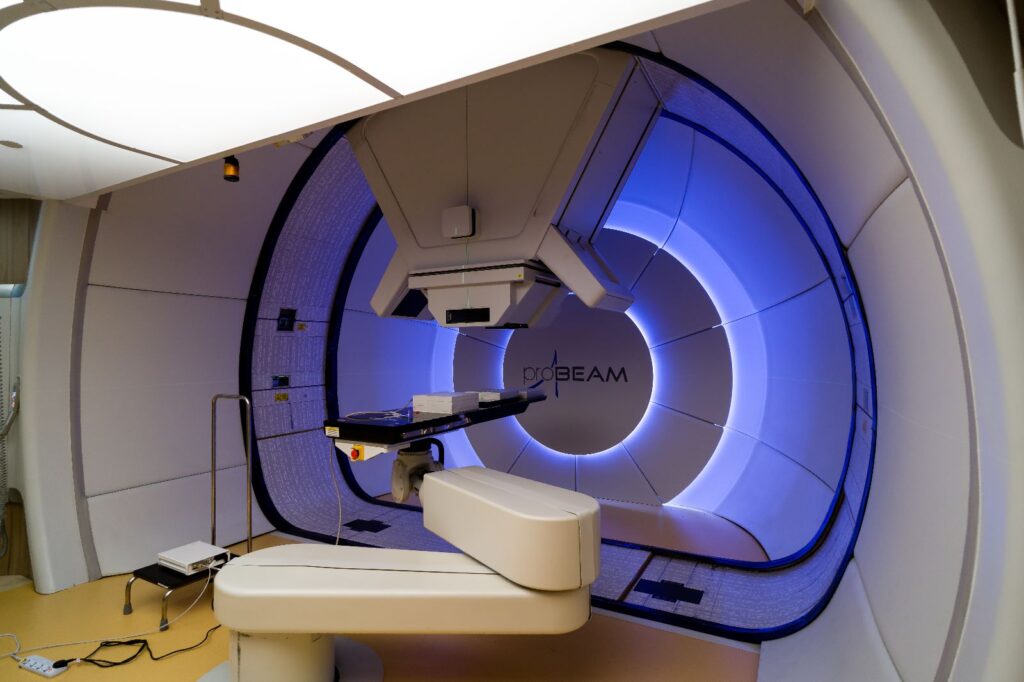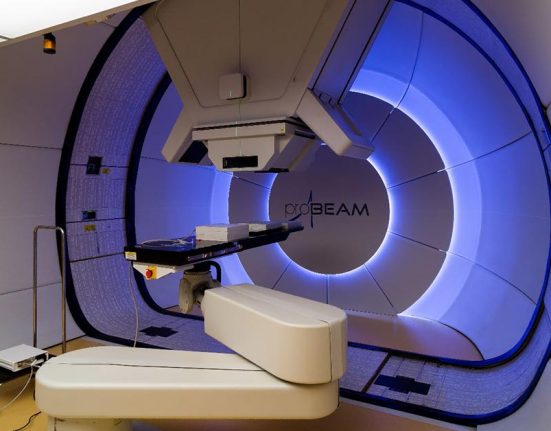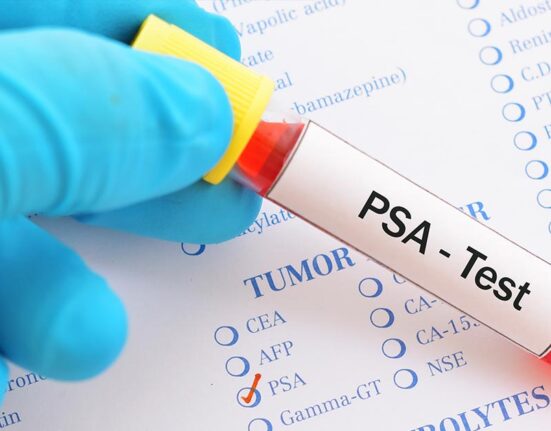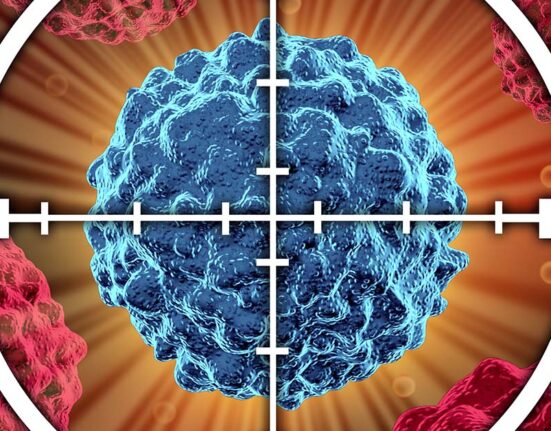Prostate cancer is the second most occurring cancer among Singaporean men according to Singapore Cancer Registry Annual Report 2020. It mostly occurs among Chinese and Indian men. There are several possible prostate cancer treatments in Singapore including surgery, radiation therapy, and hormone therapy. One of the latest and most advanced treatments for prostate cancer that is now available in Singapore is proton beam therapy, which has been given the green light by the Ministry of Health as reported by the Straits Times in May 23.

ProBeam Proton Beam Therapy System From Varian, Installed At Singapore Institute of Advanced Medicine Holdings (SAM). Photo taken at SAM.
What is Proton Beam Therapy?
Proton beam therapy is a type of radiation therapy that uses high-energy protons to kill cancer cells. Protons are tiny particles that are positively charged and found in the nucleus of an atom. When they are accelerated to high speeds, they can destroy cancer cells by damaging their DNA. Unlike traditional radiation therapy, which uses X-rays, proton beam therapy can target the cancer cells more precisely, while minimizing damage to surrounding healthy tissue.
Proton beam therapy is primarily used for the treatment of pediatric cancers and select adult cancers in Singapore. It includes brain tumors, head and neck cancers, spine tumors, and is also used as a prostate cancer treatment in Singapore.
How Does Proton Beam Therapy Work?
Proton beam therapy works by delivering a precise dose of radiation to the cancerous tissue. This is achieved by using a device called a cyclotron, which accelerates the protons to high speeds. The protons are then directed at the cancerous tissue using a system of magnets and a collimator, which shapes the beam to match the shape of the tumour. This precision targeting means that the radiation can be delivered more accurately to the cancerous tissue, while reducing the risk of damage to surrounding organs and tissues.
What are the Benefits of Proton Beam Therapy as a Prostate Cancer Treatment In Singapore?
There are several benefits to using proton beam therapy as prostate cancer treatment in Singapore. Firstly, it can target the cancerous tissue more precisely. This means that higher doses of radiation can be delivered to the tumour, while minimising damage to surrounding healthy tissue. Secondly, proton beam therapy can reduce the risk of side effects associated with traditional radiation therapy, such as bowel and bladder problems. This is because the radiation is more precisely targeted, reducing the risk of damage to nearby organs and tissues. Finally, proton beam therapy as prostate cancer treatment in Singapore can be particularly useful for younger men in treating prostate cancer, as it can reduce the risk of secondary cancers developing later in life.
Proton Beam Therapy Now Available In Singapore
Mount Elizabeth Novena Hospital (MNH) is the first healthcare institution to receive a licence to provide proton beam therapy in the country. The National Cancer Centre Singapore and the Singapore Institute of Advanced Medicine Holdings are also expected to start provision of proton beam therapy in Singapore soon. Update: As of mid-June 2023, all 3 centres have received their licence from MOH to provide proton beam therapy to patient.
[Updated 10 Aug 23]
Protect against cancer, cardiovascular disease, and other chronic diseases with regular health screening. Compare and shop for health screenings from Singapore and regional healthcare providers at a single convenient platform - shop.health365.sg
This article is informative only and is not intended to be a substitute for professional medical advice, diagnosis, or treatment, and should never be relied upon for specific medical advice.



































